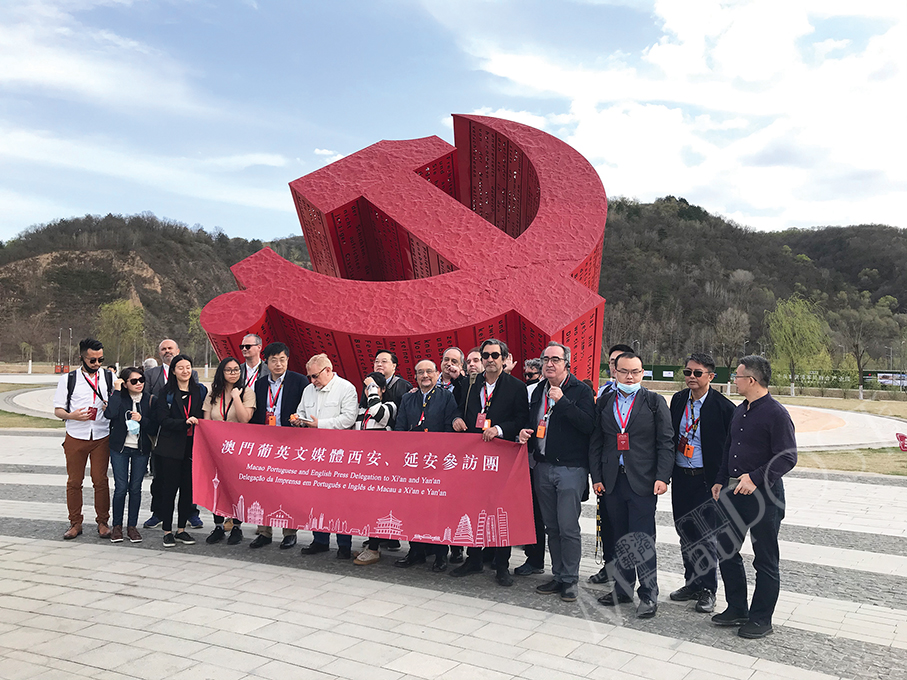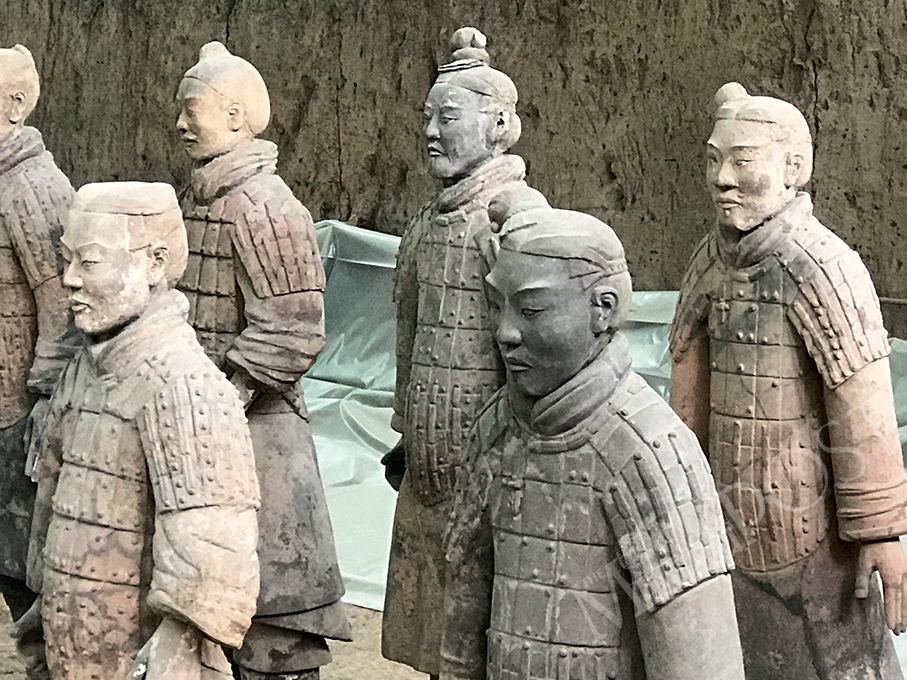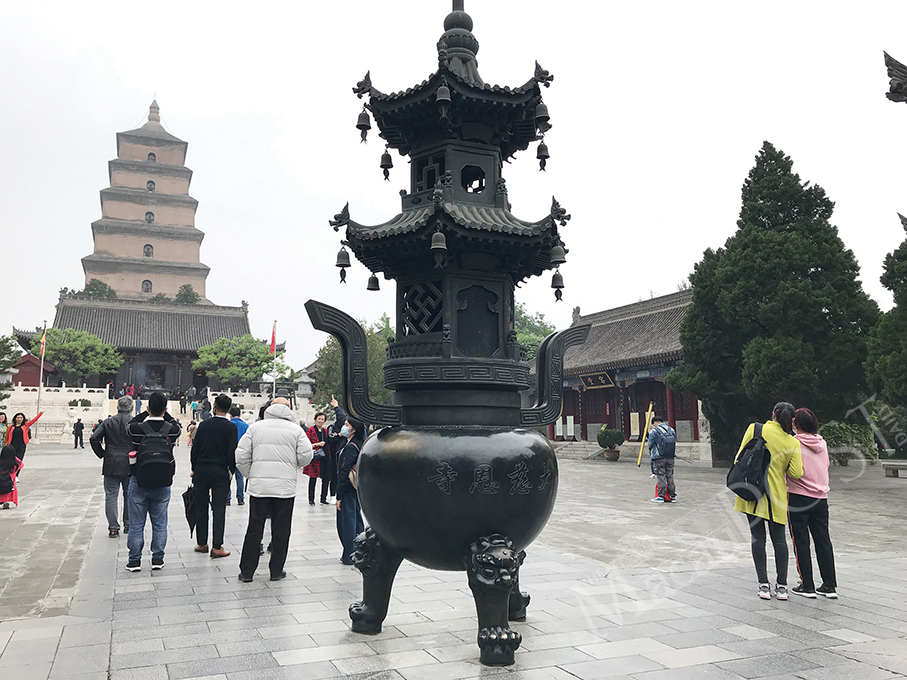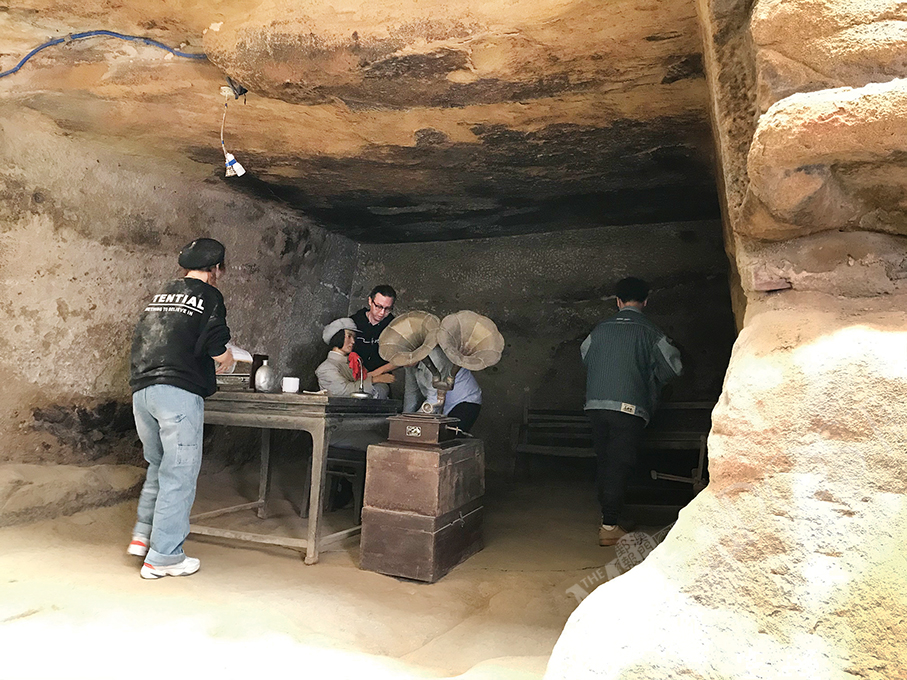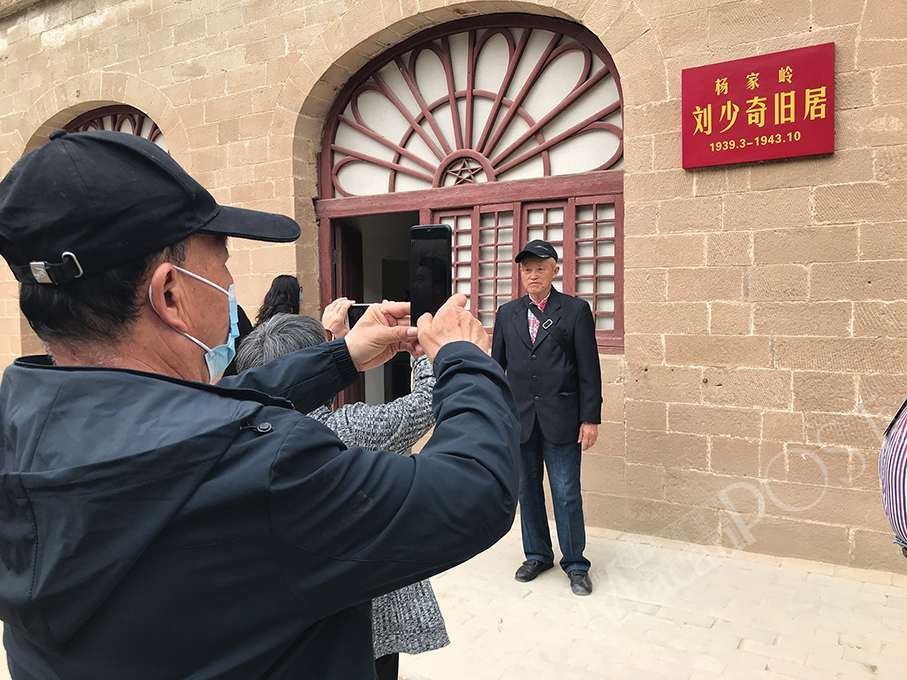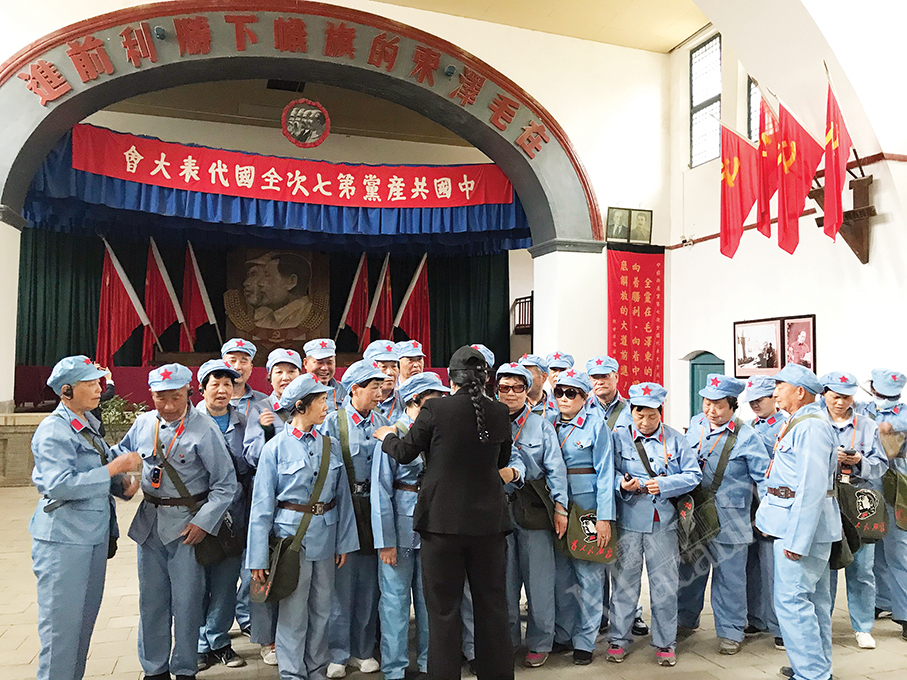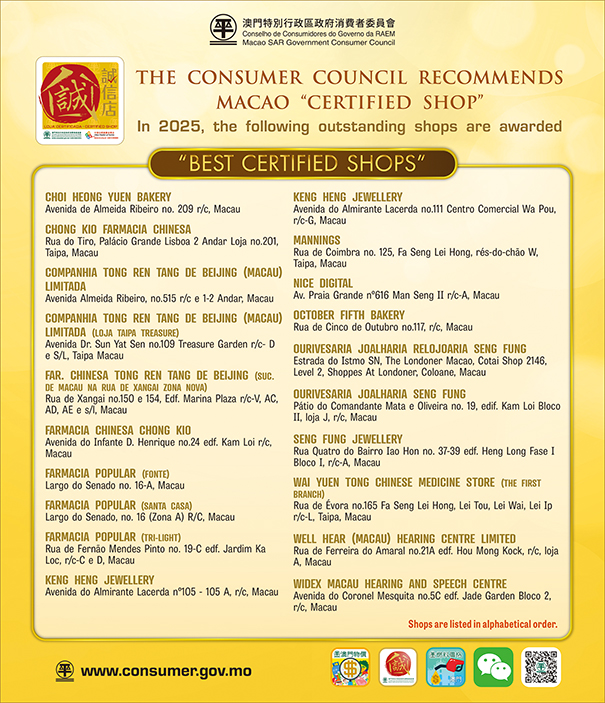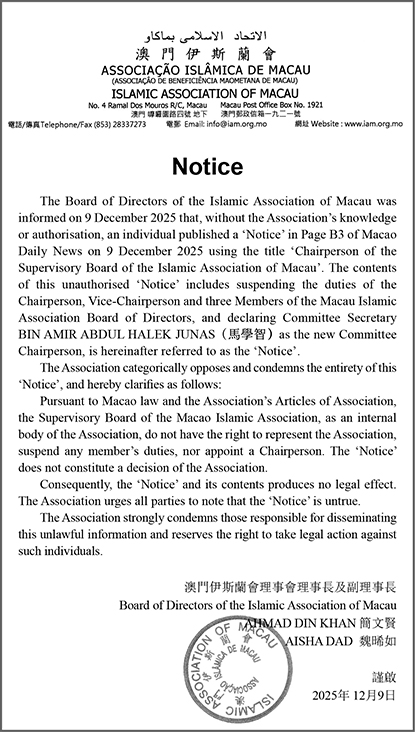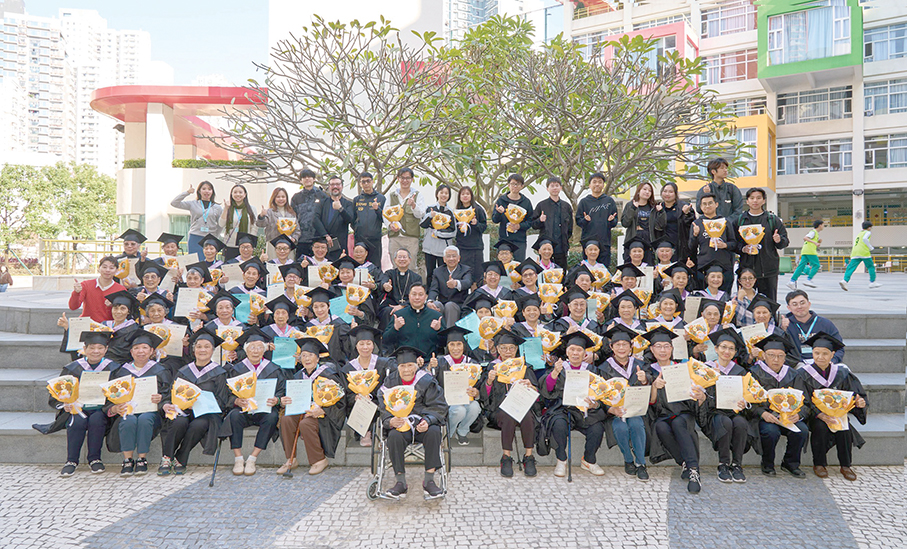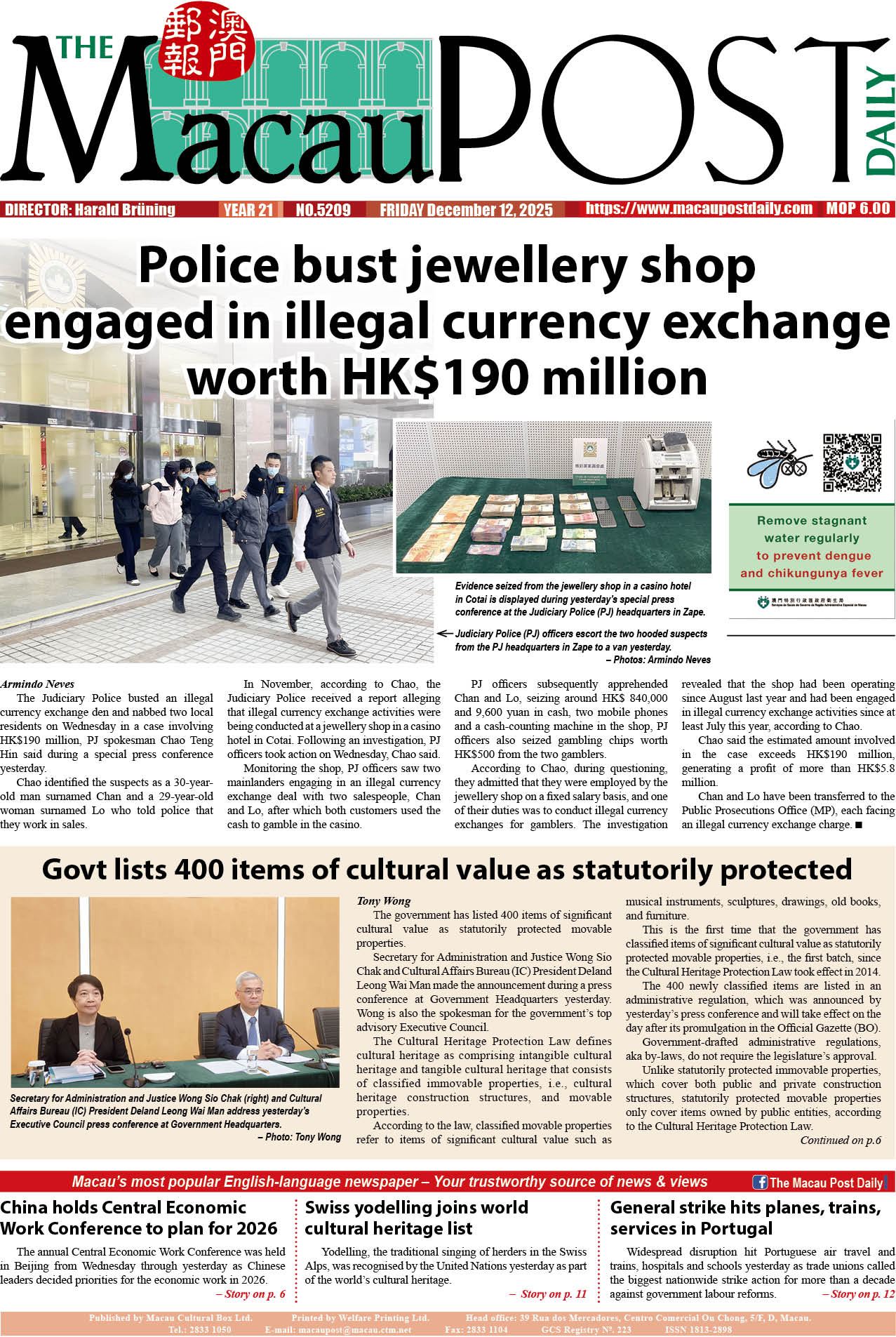Maria Cheang Ut Meng in Xi’an and Yan’an
A delegation including 17 local journalists from 11 English- and Portuguese-language media, headed by Wan Sucheng, director-general of the Publicity and Culture Department of the Liaison Office of the Central People’s Government in the Macau Special Administrative Region (MSAR), visited Xi’an and Yan’an in Shaanxi province last week.
Xi’an is the capital of Shaanxi, which has over 38 million inhabitants and is one of the birthplaces of Chinese civilization. The metropolitan Xi’an has a population of around 13 million. The visit to Xi’an included a trip to the city’s famous Muslim Snack Street – a symbol of harmony between the nation’s different ethnicities and religions as well as its great culinary diversity.
The delegation, which also included other officials from the Liaison Office as well as from the Macau Government Information Bureau (GCS) and the Foreign Ministry Commissioner’s Office in the MSAR, visited the Shaanxi History Museum, Big Wild Goose Pagoda, Terracotta Warriors and Horses, Daming Palace National Relics Park and Xi’an City Wall.
Xi’an was the capital of 13 dynasties including the Zhou, Qin, Han and Tang.
The delegation also visited the city of Yan’an (“Prolonged Peace”), a historically important site as it was near the endpoint of the Long March, and became the centre of the Chinese Communist revolution from late 1935 to early 1947. Consequently, Yan’an is celebrated as the birthplace of the revolution that resulted in the founding of the People’s Republic of China (PRC) on October 1, 1949 and the creation of the New China.
Along the way, the delegations visited the Mausoleum of the Yellow Emperor, known as Huangdi in Chinese.
The delegation then visited Nanniwan, the birthplace of the Communist Party of China’s (CPC) legendary Yan’an spirit.
Last September, President Xi Jinping called for the carrying out of an in-depth study of the Yan’an spirit and vigorously promoting and carrying forward the spirit. In a letter to congratulate the China Yan’an Spirit Research Society on the opening of its sixth congress in Beijing and on its 30th founding anniversary, Xi said the Yan’an spirit fostered by revolutionaries and communists of the older generation during the years in Yan’an has become an invaluable source of inspiration for the Party.
Then, the delegation got a bird’s-eye view of Yan’an city from Shangbaota Mountain, visited the Yan’an Journalism and Press Memorial Museum at the former headquarters of Xinhua News Agency, watched the 3D movie “Flying over Yan’an” at the museum before visiting the revolutionary sites of Yangjia Liung and Zao Yuan. Communist revolutionary leaders Mao Zedong, Zhou Enlai, Zhu De, Liu Shaoqi and others lived in the area’s cave dwellings.
The revolutionary sites’ historic importance is further increased by the fact that the Communist Party of China celebrates the centennial of its founding this year. Therefore, Shaanxi is not only an important birthplace of the Chinese civilisation but also an important birthplace of the New China created by the Party.
Consequently, many of the places visited by the delegation during the six-day tour are extremely popular destinations for “red tourism” trips organised by schools, enterprises, community organisations and other entities, as well as individual travellers such as students.
After visiting the history-laden city of Yan’an, the delegation returned to Xi’an (“Western Peace”), which with its urban history of over 3,000 years is one of the world’s oldest cities. There, the delegation also visited the world-famous Terracotta Warriors Museum.
The well-organised trip reaffirmed the view that China is not only one of the world’s most ancient nations but also one of its most rapidly modernising countries.
The delegation returned to Macau on Friday. (Photos by Maria Cheang)
